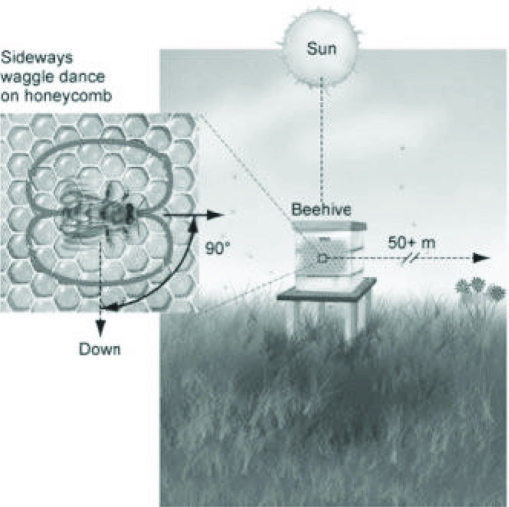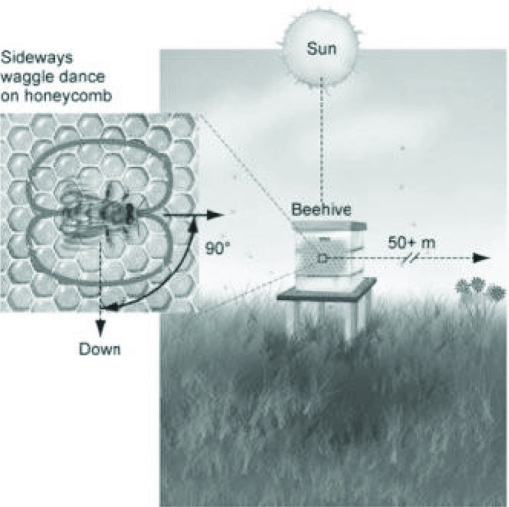A) Rats are probably just intelligent enough to avoid poison.
B) Rats may experience a large variety of toxins in their environment and learn to avoid them.
C) Rats are taught by their parents to test small bits of food first and then return later if the food seems safe.
D) Rats may be able to tolerate large amounts of poison.
Correct Answer

verified
Correct Answer
verified
Multiple Choice
Female spotted sandpipers aggressively court males and, after mating, leave the clutch of eggs for the male to incubate. This sequence may be repeated several times with different males until no available males remain, forcing the female to incubate her last clutch. Which of the following terms best describes this behavior?
A) polygyny
B) polyandry
C) promiscuity
D) certainty of paternity
Correct Answer

verified
Correct Answer
verified
Multiple Choice
A stickleback fish will attack a fish model as long as the model has red coloring. Which of the following is illustrated by this observation?
A) sign stimulus
B) cognition
C) imprinting
D) classical conditioning
Correct Answer

verified
Correct Answer
verified
Multiple Choice
Which of the following led to the evolution of sexual dimorphism?
A) a monogamous mating system
B) mate-choice copying
C) game selection theory
D) sexual selection
Correct Answer

verified
Correct Answer
verified
Multiple Choice
Which of the following is a behavior that minimizes the cost of looking for food and maximizes the benefits of finding food?
A) directed foraging
B) cost-benefit consumption
C) offset scavenging
D) optimal foraging
Correct Answer

verified
Correct Answer
verified
Multiple Choice
Which of the following is true of innate behaviors?
A) Their expression is only weakly influenced by genes.
B) They occur with or without environmental stimuli.
C) They are expressed in most individuals in a population.
D) They occur in invertebrates and some vertebrates but not mammals.
Correct Answer

verified
Correct Answer
verified
Multiple Choice
An owner of a new restaurant wants to locate near a college campus. Her new Veggie Burger restaurant can locate within 1 mile of campus or more cheaply 2 miles from the campus. But at 2 miles from campus, the restaurant may draw fewer customers. Which of the following behaviors relates best to aspects of the restaurant owner's decision, weighing the cost of the location, the distance from customers, and the profitability of the business?
A) game theory
B) agonistic behavior
C) optimal foraging model
D) factors affecting mate selection
Correct Answer

verified
Correct Answer
verified
Multiple Choice
How do altruistic behaviors arise through natural selection?
A) Altruistic behavior increases the likelihood that the altruist's genes will be represented in the next generation.
B) The altruist is appreciated by other members of the population because its survivability has been enhanced by virtue of its risky behavior.
C) Animals that perform altruistic acts are allowed by their population to breed more, thereby passing on their behavior genes to future generations.
D) Altruistic behaviors lower stress in populations, which increases the survivability of all the members of the population.
Correct Answer

verified
Correct Answer
verified
Multiple Choice
Which one of the following statements about mating systems and parental care is true?
A) Monogamy is more common in species of birds that produce young that can care for themselves almost immediately after hatching.
B) Polygyny is more common in animal species that require two parents to feed and protect offspring.
C) High certainty of paternity is correlated with low male parental care in most species of birds and mammals.
D) Fish and amphibians are more likely to provide parental care with external fertilization than internal fertilization.
Correct Answer

verified
Correct Answer
verified
Multiple Choice
What correlates with the color of the throats of males in a population of side-blotched lizards?
A) ambient temperature: blue = cold; orange = normal; yellow = hot
B) stage of development/maturity
C) receptiveness to mate
D) the success of the mating behavior of each of the throat-color phenotypes
Correct Answer

verified
Correct Answer
verified
Multiple Choice
A male stickleback fish will attack other male sticklebacks that invade its nesting territory. It will only attack male fish, which display the red belly characteristic of the species. Which of the following is an ultimate causation of this behavior?
A) The eyes and brain of male sticklebacks are extra sensitive to the color red, leading to the automatic attack of red invaders.
B) The CNS reaction to the color red is a fixed sequence of unlearned acts directly linked to the red invaders.
C) Having a territory increases the chances of attracting a mate and passing along more genes to the next generation.
D) The sight of red stimulates the autonomic nervous system of male sticklebacks, generating an aggressive physiological response to fight.
Correct Answer

verified
C
Correct Answer
verified
Multiple Choice
Which of the following would best test the hypothesis that moths stop flying in response to high-intensity bat sounds?
A) Isolate and characterize the neurons that control moth flight muscles.
B) Play recorded high-intensity bat sounds to wild flying moths and record what happens.
C) Observe responses of bats to moths in natural settings.
D) In an enclosure, compare the responses of moths to different models shaped like bats.
Correct Answer

verified
Correct Answer
verified
Multiple Choice
According to Hamilton's rule, ________.
A) Natural selection does not favor altruistic behavior that causes the death of the altruist
B) Natural selection favors altruistic acts when the resulting benefit to the recipient, corrected for relatedness, exceeds the cost to the altruist
C) Natural selection is more likely to favor altruistic behavior that benefits an offspring than altruistic behavior that benefits a sibling
D) The effects of kin selection are larger than the effects of direct natural selection on individuals
Correct Answer

verified
Correct Answer
verified
Multiple Choice
Use the following figures to answer the question.  What could you conclude if the honeybee in the figure switched from the "waggle dance" to the "round dance"?
What could you conclude if the honeybee in the figure switched from the "waggle dance" to the "round dance"?
A) The food source is no longer available; all the nectar has been harvested.
B) The preferred food source was farther away than originally communicated.
C) The bee is trying to conserve energy by switching to the round dance.
D) The food source is closer to the hive than originally communicated.
Correct Answer

verified
D
Correct Answer
verified
Multiple Choice
Upon returning to its hive, how does a European honeybee communicate to other worker bees the presence of nearby food sources?
A) they vibrate their wings at varying frequencies
B) they perform a special dance
C) they produce high-frequency tones
D) they flash their wings sending visual cues
Correct Answer

verified
Correct Answer
verified
Multiple Choice
What is generally correct about animals that help other animals of the same species?
A) they have excess energy reserves
B) they are bigger and stronger than the other animals
C) they are usually closely related to the other animals
D) they are almost always female
Correct Answer

verified
Correct Answer
verified
Multiple Choice
Many behaviors result from interactions with the environment. Which of the following ultimately modifies all behaviors?
A) hormones
B) evolution
C) pheromones
D) the nervous system
Correct Answer

verified
Correct Answer
verified
Multiple Choice
Upon observing a golden eagle flying overhead, a sentry prairie dog gives a warning call to other foraging members of the prairie dog community. Which of the following behaviors are represented by this example?
A) classical conditioning
B) innate behavior
C) imprinting
D) altruistic behavior
Correct Answer

verified
Correct Answer
verified
Multiple Choice
Use the following figures to answer the question.  From the figures, what can we determine about the location of the food sources?
From the figures, what can we determine about the location of the food sources?
A) The waggle dance in the figure indicates that the food is directly under the hive.
B) The waggle dance in the figure indicates that the food is about the height of the hive.
C) The waggle dance in the figure indicates that the food is close to the hive.
D) The waggle dance in the figure indicates that the food is 90° to the right of the sun.
Correct Answer

verified
D
Correct Answer
verified
Multiple Choice
Which of the following best explains why coastal and inland garter snakes react differently to banana slug prey?
A) Ancestors of coastal snakes that could detect and eat the abundant banana slugs had increased fitness. No such selection occurred inland, where banana slugs were absent.
B) Banana slugs are camouflaged, and inland snakes, which have poorer vision than coastal snakes, are less able to see them.
C) Garter snakes learn about acceptable prey from other garter snakes. Inland garter snakes are less social and so learn about fewer types of prey.
D) Coastal banana slugs are palatable to garter snakes. Inland banana slugs are distasteful, so inland snakes learn to avoid them.
Correct Answer

verified
Correct Answer
verified
Showing 1 - 20 of 64
Related Exams